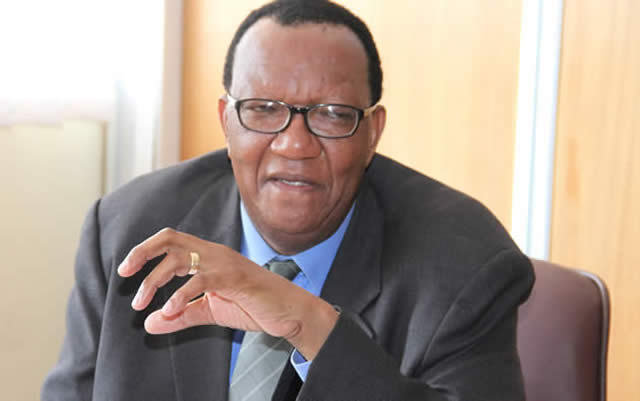Commodity exchanges in Africa: Approaches, best practices

Dr Gift Mugano
Commodity exchange by broader definition is an organised market where future delivery contracts for graded commodities such as grains, cotton, sugar and coffee are bought and sold. Zimbabwe in February 2011 launched the Zimbabwe Commodity Exchange which never saw the light of the day.For Zimbabwe, the need to establish a commodity exchange is inevitable considering the importance in unlocking agricultural finance and market access. Against this background, this week’s discussion focuses on three approaches on institutional structures of commodity exchanges and deduct best practices. There are three approaches which are frequently used. These are producer driven, trader driven and Government driven.
Producer or stakeholder driven
There are two strategies that this exchange approach can use to get volumes and become sustainable.
(i) Organise a significant percentage of producers and get them to sell their produce through the exchange, indirectly “forcing” buyers to use the exchange and promote transparency.
This is generally extremely hard to organise for two reasons:
Firstly,markets are so generally fragmented and very poorly organised, and to reach enough farmers to get a critical mass of produce is a daunting task.
Structures, infrastructure and storage are lacking, making it very hard for most farmers to safely keep their produce; often making selling right after harvest being the only real option. It is predominantly a buyer’s market and this structure is very hard for the producers to untie.
Secondly, many buyers thrive on the lack of transparency that provides considerable margins, generating good money, even on fairly low volumes. They are reluctant to buy through the exchange as it would inevitably erode these big margins; and
(ii) Align with a pull factor, such as a buyer of large quantities(like national food agencies, donor agencies such as World Food Programme (WFP) and large traders/processors).
The pull will support the exchange structures and the exchange; generate the interest needed and bring more parties to participate in an open system.
There is more willingness for the market to open up when large buyers insist on using commodity exchanges. Market participants make strategies and implement structures that add value for all, which is what develops the markets and gives the structures long-term sustainability. It is responsible business.
Trader driven
A trader driven exchange exists on the basis of trade concluded within a group of large traders and, quite naturally, the exchange will seek to service the interests of this group. If this group sees benefits in using the exchange, then it will, as a result, have good volumes traded across the exchange floor.
However, this cannot normally be an ideal model as it exists to serve the interests of a relatively small group of individuals and will not get the necessary buy-in from other potential stakeholders.
Government driven
A good example is the Ethiopian Commodity Exchange (ECX), which is established as a demutualised corporate entity with a clear separation of Ownership, Membership, and Management.
Thus,owners cannot have a trading stake, members cannot have any ownership stake, and the management can be neither drawn from the owners nor from the members. ECX is designed as a public-private partnership enterprise, in a unique institutional innovation for Ethiopia.
The corporate governance of ECX maintains a healthy balance of owner and member interests. There are obvious advantages to an exchange set-up and operated with a large stake and interest from the government, including the volumes of trade conducted across the exchange and the “price discovery that goes with that.
However, there are also some disadvantages, including the question of price discovery as, where you have a single marketing channel, which it is compulsory to use; one has to ask if this constitutes the best price opportunity or not, as the market has not really been tested.
To leave market participants with no freedom of choice really just replaces previous single channel marketing systems with a new one.
Transparency is compromised, true market values are probably not realised by producers and quality issues are likely to arise, as has happened in Ethiopia. Volumes are likely to be high,as there are no alternatives, but neither is there likely to be much incentive to increase production if there is only one market to sell through.
Best practices
There continues to be much debate about commodity exchanges in Africa, not only regarding their need, but also their ability to make a difference in the markets in which they operate.
Whilst this debate continues, a number of initiatives have been started, some of which have been more successful than others.
However, it is crucial to understand the need for certain fundamentals to be existing to enhance the chances of a new commodity exchange succeeding.
These include:
A Clear Objective: The need to know what you want to set up and why. This is necessary for potential participants and for the general view (inside & outside); a business plan (prospectus) is a good way to start; and, for a future exchange, the need to provide a price risk management facility.
Enabling Policy Environments and Good Infrastructure: The building blocks are important. Enabling and consistent legislation must be in place: In agricultural policy; in financial policy; in trade policy; and in legal policy; and, all these need to be complimentary. Infrastructure (storage and transport)is also important.
Market Support (Buy In):The best organization, people, systems, contracts might help, but without market support, it will be difficult to sustain an exchange.
A mutual structure with monetary commitment has helped a number of exchanges. The commitment from the financial sector (banks) is very important. Market support is a function of value-added.
Applicable and Good Trading System: In particular,an efficient and sound clearing system (usually Futures Exchanges) is needed. The trading system must be requirement driven, robust, and flexible and allow for growth in all aspects. The clearing system must be reliable and efficient and ensure confidence in the trading arena.
Clear Rules and Consistent Surveillance: To maintain integrity. Primary role of government is regulating the exchange (where there is the capacity). An exchange requires clear and balanced rules that are consistently applied. It also requires ongoing surveillance. Integrity is paramount and governments should act decisively to ensure it.
The Correct Contracts (Products): The product traded must reflect the reality. It should be developed in consultation and conjunction with the market balance between market initiatives and exchange initiatives.
Constant Education: Education should be a big part of marketing, and it should be ongoing. Education should aim at market participants, potential market participants, media, government officials, and educational institutions.
Committed Staff: Exchange staff should not only be knowledgeable and good, but should also be committed and believe in the benefits of the exchange.
Adaptability and Relevance: An exchange serves the market and must constantly re-evaluate whether it is in touch with reality. An exchange will make mistakes,but it should learn from them and adapt accordingly. However, it should not change for the sake of change!
Value Addition: The basic areas where an exchange can add value is in transparent price discovery,guaranteed settlement and price risk management. If value can be added more efficiently in the absence of an exchange, it will (without an exchange). If an exchange does not add value it will not be sustainable.
Dr Mugano is an Economic Advisor, Author and Expert in Trade and Competitiveness. He is a Research Associate of Nelson Mandela Metropolitan University. Feedback: +263 772 541 209 or [email protected]










Comments